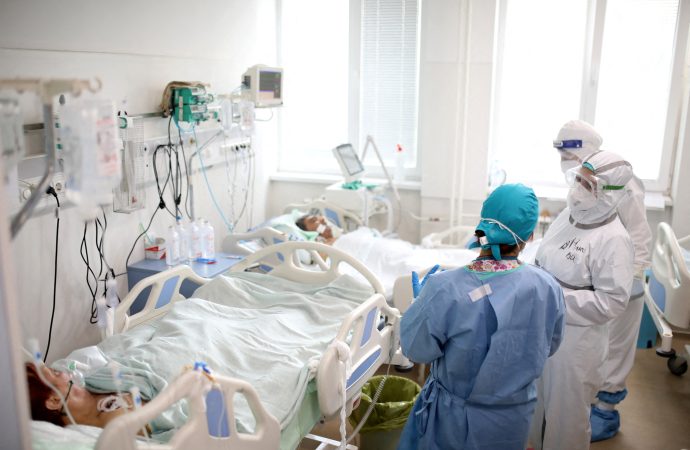Introduction In the wake of the COVID-19 pandemic, healthcare systems have undergone significant changes, leading to a notable decrease in hospital-acquired infections. This article delves into the progress made in reducing these infections in healthcare settings. However, it’s crucial to acknowledge that patient safety concerns continue to linger. We will explore the factors contributing to
Introduction
In the wake of the COVID-19 pandemic, healthcare systems have undergone significant changes, leading to a notable decrease in hospital-acquired infections. This article delves into the progress made in reducing these infections in healthcare settings. However, it’s crucial to acknowledge that patient safety concerns continue to linger. We will explore the factors contributing to the decline in hospital infections and the ongoing challenges patients face in healthcare settings. Additionally, we will discuss strategies to enhance patient safety in hospitals.
The Reduction in Hospital-Acquired Infections
The pandemic has been a catalyst for transformation in healthcare practices, resulting in a decrease in hospital-acquired infections. Let’s explore the reasons behind this positive trend.
Stringent Hygiene Practices:
Healthcare facilities have enforced strict hygiene protocols, including frequent handwashing, meticulous surface disinfection, and the consistent use of personal protective equipment. These measures have significantly contributed to the reduction in hospital infections.
Telehealth Advancements:
The pandemic accelerated the adoption of telehealth services, reducing the need for in-person visits. Patients can now consult with healthcare providers remotely, minimizing their exposure to potential pathogens.
Enhanced Training:
Healthcare professionals have received additional training in infection control in response to the crisis. This has equipped them with the knowledge and skills to deliver safer patient care.
Attention to Ventilation:
Hospitals have made investments in improving their ventilation systems to minimize airborne transmission of infections. This focus on air quality has played a significant role in creating a safer healthcare environment.
Ongoing Patient Safety Concerns
Despite the progress in reducing hospital-acquired infections, it’s essential to recognize that patient safety concerns are far from resolved. Understanding these concerns is critical for addressing ongoing challenges in healthcare.
Antibiotic Resistance:
The overuse and misuse of antibiotics in healthcare can lead to antibiotic-resistant infections, which pose a substantial risk to patients. Treating such infections can be challenging and may lead to prolonged hospital stays and complications.
Invasive Procedures:
Certain medical procedures, like catheterizations and surgeries, inherently carry infection risks. Invasive procedures breach the body’s natural defenses, increasing the likelihood of infection.
Vulnerable Patients:
Immunocompromised individuals, such as those undergoing chemotherapy or organ transplantation, are at a higher risk of contracting infections in healthcare settings due to their weakened immune systems. Additionally, elderly patients may have diminished immune responses, making them more susceptible to infections.
Staffing Shortages:
Understaffing in healthcare facilities can lead to lapses in infection control practices. Overworked and fatigued staff may inadvertently neglect critical protocols, increasing the likelihood of patient infections.

Image by: https://www.nursingworld.org/
Strategies for Enhancing Patient Safety
Ensuring patient safety in healthcare settings remains a paramount concern. Various strategies can be employed to mitigate risks and provide a safer healthcare environment.
Antibiotic Stewardship:
Prudent antibiotic use and monitoring can help reduce the development of antibiotic-resistant infections. Educating healthcare providers and ensuring antibiotics are prescribed only when necessary are essential components of antibiotic stewardship programs.
Strict Adherence to Protocols:
Healthcare facilities must maintain stringent infection control measures consistently. This includes enforcing practices such as hand hygiene, sterilization, and the proper use of personal protective equipment. Regular audits and training can help ensure compliance.
Patient Education:
Educating patients about infection risks and preventive measures empowers them to advocate for their safety. Providing information about vaccination, hand hygiene, and steps to take if they observe lapses in infection control can help patients protect themselves.
Addressing Staffing Issues:
Addressing staffing shortages and promoting staff well-being are vital for maintaining patient safety. Sufficient staffing levels can reduce fatigue-related lapses in infection control. Additionally, providing emotional support and resources for healthcare workers to manage stress and burnout can positively impact patient care.
The Path Forward
The reduction in hospital-acquired infections is undoubtedly a positive development, reflecting the dedication of healthcare workers, facilities, and policymakers to prioritize patient safety. Nevertheless, patient safety concerns persist, and they must be addressed systematically. The journey to safer healthcare is ongoing, requiring vigilance, education, and a commitment to infection control to provide the highest standards of care. Patient safety is a collective responsibility, and by working together, we can strive to minimize patient risks in healthcare settings.

















Leave a Comment
Your email address will not be published. Required fields are marked with *